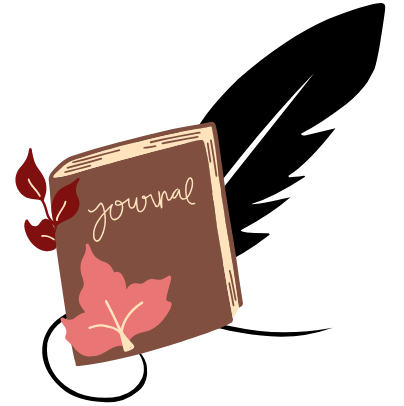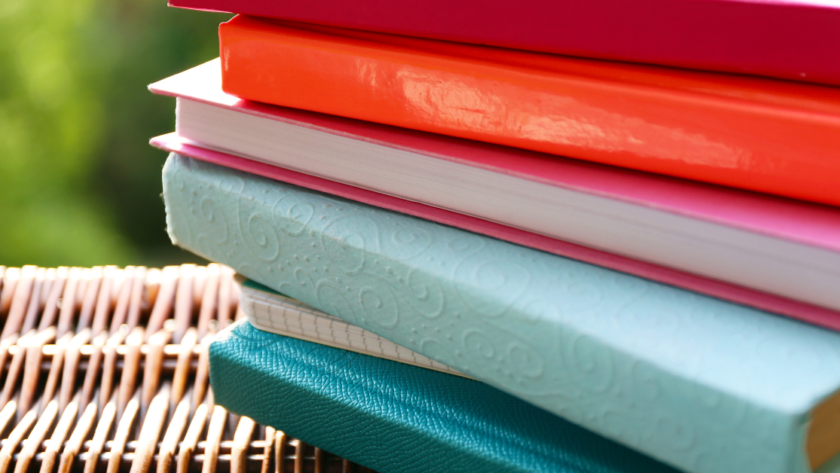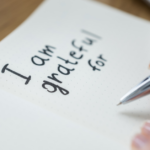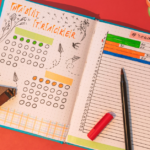As a writer and long-time journaling enthusiast, I’ve explored countless notebooks and digital platforms in my quest for the perfect writing companion.
Whether you’re a seasoned author or just starting out, the right journal can make all the difference in unleashing your creative potential.
The Importance of the Perfect Journal
A well-chosen journal serves as a portal to your innermost thoughts, a canvas for your wildest ideas, and a trusted confidant in your personal and professional growth. With so many options available, choosing the journal that will truly elevate your writing needs careful consideration.
Understanding Your Journaling Needs
Before exploring specific journals, it’s crucial to understand what you’re looking for in your writing companion. Are you a fiction writer who needs space to sketch out character profiles and plot twists?
Perhaps you’re more interested in self-reflection and personal growth.
Or maybe you’re a busy professional who needs a combination of task management and creative outlet.
Consider these factors when choosing your ideal journal:
Purpose
Define your primary goal for journaling. Creative writing, self-reflection, goal-setting, or a combination?
Paper Quality
If you’re using analog methods, the feel of pen on paper can significantly impact your writing experience. Look for acid-free, fountain pen-friendly paper for the best results.
Binding
A journal that lays flat when open can make for more comfortable extended writing sessions. Smyth-sewn binding is often considered the gold standard for durability and functionality.
Format
Do you prefer lined, blank, dot grid, or guided pages? Each has it’s advantages depending on your writing style and needs.
Size and Portability
Consider where and when you’ll be journaling most often. A pocket-sized notebook might be perfect for on-the-go inspiration, while a larger format could be ideal for in-depth writing sessions at home.
Additional Features
Bookmark ribbons, elastic closures, and inner pockets can enhance the functionality of your journal.
Top Journals for Different Writing Needs
Now that we’ve established the key factors to consider, let’s explore some of the best journals for various writing purposes.
For Creative Writing
1. Moleskine Classic Notebook
The Moleskine Classic has long been a favorite among writers and artists. It’s smooth, high-quality paper and durable cover make it perfect for capturing your creative ideas.
The elastic closure and inner pocket add practical functionality to it’s timeless design.
2. Leuchtturm1917 Medium A5 Dotted Hardcover Notebook
With it’s numbered pages and table of contents, the Leuchtturm1917 is ideal for organizing your writing projects. The dotted pages offer flexibility for both writing and sketching, making it a versatile choice for creative minds.
3. Rhodia Webnotebook
Known for it’s exceptionally smooth paper, the Rhodia Webnotebook is a dream for those who appreciate the tactile experience of writing. It’s subtle ivory pages are easy on the eyes during long writing sessions.
For Bullet Journaling
1. Scribbles That Matter Pro Dotted Journal Notebook
This journal features thick, bleed-resistant paper and a pre-printed key and index, making it perfect for bullet journaling beginners and experts alike. The durable cover and high-quality construction confirm it can withstand daily use.
2. Archer & Olive A5 Dot Grid Notebook
With it’s 160 GSM paper, the Archer & – Olive notebook is ideal for those who love to use a variety of media in their journaling. It can handle watercolors, markers, and other art supplies without bleeding or ghosting.
3. Lemome Dotted Bullet Journal
This affordable option doesn’t skimp on quality. With it’s thick paper, lay-flat design, and included pen loop, it’s a great choice for those just starting their bullet journaling practice.
For Gratitude and Mindfulness
1. The Five Minute Journal
This guided journal is designed to boost happiness and productivity through daily gratitude practice. It’s simple, structured format makes it easy to maintain a consistent journaling habit.
2. Intelligent Change Productivity Planner
Combining goal-setting with mindfulness, this planner helps you prioritize tasks and reflect on your progress. It’s an excellent tool for those looking to improve both their productivity and overall well-being.
3. Paperblanks Journals
With their stunning cover designs inspired by art and literature, Paperblanks journals add a touch of beauty to your mindfulness practice. The high-quality paper and sturdy construction make them a joy to write in.
For Travel Writing
1. Midori Travelers Notebook
This customizable system allows you to mix and match different inserts, making it perfect for documenting your travels. The leather cover ages beautifully, becoming a cherished memento of your adventures.
2. Rite in the Rain All-Weather Journal
For the adventurous writer, this waterproof journal can withstand the elements. It’s durability makes it ideal for outdoor excursions and travel to challenging environments.
3. Field Notes Memo Books
These pocket-sized notebooks are perfect for jotting down quick observations and ideas on the go. Their portability and rugged design make them a favorite among travelers and urban explorers alike.
For Digital Journaling
1. Day One Journal (iOS, Android, macOS)
This beautifully designed app offers a seamless digital journaling experience across devices. With features like automatic weather and location logging, it’s perfect for those who want to capture the context of their entries.
2. Journey (cross-platform)
Available on multiple platforms, Journey offers a clean, intuitive interface for digital journaling. It’s mood tracking and photo integration features make it easy to create rich, multimedia entries.
3. Penzu (web-based)
This web-based journaling platform offers strong privacy features, making it ideal for those who prioritize security in their digital writing. It’s simple interface focuses on the writing experience without unnecessary distractions.
The Science Behind Journaling
The benefits of journaling extend far beyond simply organizing your thoughts. Research has shown that regular journaling can have profound effects on both mental and physical well-being:
Improved Mental Health
A study published in the Journal of Experimental Psychology found that journaling about future goals can significantly reduce anxiety and improve performance.
Enhanced Creativity
The act of freewriting, or stream-of-consciousness journaling, has been shown to boost creative thinking and problem-solving skills.
Better Memory Retention
Writing by hand engages multiple senses and motor skills, which can improve memory retention and cognitive function.
Increased Self-Awareness
Regular reflection through journaling can lead to greater emotional intelligence and self-understanding.
Faster Physical Healing
Surprisingly, expressive writing has been linked to improved immune function and faster wound healing, as demonstrated in a 2013 study published in Psychosomatic Medicine.
Innovative Journaling Techniques
To make the most of your chosen journal, consider experimenting with these innovative techniques:
Bullet Journaling
This method, created by Ryder Carroll, combines task management with traditional journaling for increased productivity.
It uses a system of symbols and short-form notation to quickly capture and organize information.
The flexibility of bullet journaling allows you to adapt it to your specific needs, whether you’re tracking habits, planning projects, or recording daily events.
Morning Pages
Popularized by Julia Cameron in “The Artist’s Way,” this technique involves writing three pages of stream-of-consciousness thoughts each morning to clear your mind and boost creativity.
The key is to write without censoring yourself or worrying about grammar or spelling.
This practice can help you overcome creative blocks, gain clarity on personal issues, and start your day with a fresh perspective.
Gratitude Journaling
Focusing on daily moments of appreciation can boost overall well-being and cultivate a positive mindset. By regularly recording things you’re grateful for, you train your brain to notice and appreciate the good in your life.
This practice has been linked to increased happiness, reduced stress, and improved relationships.
Art Journaling
Incorporating visual elements like sketches, collages, and paintings into your writing engages different parts of your brain and enhances self-expression.
This technique is particularly helpful for visual thinkers or those who find it challenging to express themselves solely through words.
Art journaling can be a powerful tool for processing emotions, exploring creativity, and documenting experiences in a unique and personal way.
Prompt-Based Journaling
Using guided prompts can help explore specific themes or overcome writer’s block. Many journals now come with built-in prompts, or you can find inspiration online.
Prompts can range from simple questions like “What made you smile today?” to more complex scenarios that encourage deep reflection or creative storytelling.
Environmental Considerations
As journaling gains popularity, it’s important to consider the environmental impact of our writing habits. Many manufacturers now offer eco-friendly options:
Recycled Paper Journals
These journals use paper made from post-consumer waste, reducing the demand for virgin paper and helping to conserve forests.
Look for journals that specify the percentage of recycled content used in their production.
Tree-Free Paper Choices
Innovative materials like bamboo, sugarcane, or hemp are being used to create paper without relying on traditional wood pulp.
These choices often have a lower environmental impact and can produce high-quality paper suitable for journaling.
Digital Journaling Apps
By opting for digital journaling, you can significantly reduce paper consumption. Many apps offer features that mimic the experience of writing in a physical journal while providing the added benefits of searchability, backup, and multimedia integration.
When choosing a journal, consider opting for brands that prioritize sustainability in their production processes. Look for certifications like FSC (Forest Stewardship Council) or companies that join in reforestation programs to offset their environmental impact.
The Future of Journaling
As technology advances, the line between analog and digital journaling continues to blur. Some innovative products on the horizon include:
Smart Journals
These hybrid devices mix the tactile experience of writing on paper with the convenience of digital storage. Using special pens and paper, these journals can digitize handwritten notes in real-time, allowing for easy organization, searching, and sharing of your entries.
AI-Powered Journaling Assistants
Artificial intelligence is being integrated into journaling apps to provide personalized prompts, analyze writing patterns, and offer insights into your mood and personal growth over time.
These assistants can help you maintain consistency in your journaling practice and uncover patterns you might not have noticed on your own.
Augmented Reality Journals
AR technology is being explored to create journals that blend physical writing with digital enhancements. Imagine pointing your smartphone at a page of your journal and seeing your sketches come to life or accessing extra multimedia content related to your entries.
These developments promise to mix the tactile satisfaction of traditional journaling with the convenience and analytical capabilities of digital platforms, offering writers new ways to explore their creativity and personal growth.
Embracing Your Journaling Practice
Choosing the right journal is just the first step in your writing practice. The real magic happens when you commit to regular writing and allow yourself the freedom to explore, experiment, and grow through your words.
Remember, there’s no “perfect” way to journal. Whether you prefer the structure of bullet journaling, the freedom of freewriting, or the guidance of prompted entries, the most important thing is to find a method that resonates with you and helps you achieve your writing goals.
As you begin this practice, be patient with yourself. Like any skill, journaling improves with time and consistency.
Embrace the process, celebrate small victories, and don’t be afraid to try new techniques or switch up your journaling style as your needs evolve.
Here are some tips to help you establish and maintain a fulfilling journaling practice:
- Set a regular time for journaling: Whether it’s first thing in the morning, during your lunch break, or before bed, having a consistent time can help make journaling a habit.
- Start small: If the idea of writing pages every day feels overwhelming, begin with just a few sentences or bullet points.
You can gradually increase the length of your entries as you become more comfortable.
- Create a comfortable writing environment: Find a quiet, comfortable space where you can write without distractions.
This could be a cozy corner of your home, a local café, or even a park bench.
- Experiment with different styles: Don’t be afraid to mix things up.
Try different journaling techniques, switch between digital and analog methods, or mix writing with sketching or collage.
- Be honest and authentic: Your journal is a private space for self-expression.
Allow yourself to write freely without worrying about judgment or perfection.
- Review your entries periodically: Take time to read through your past entries.
This can provide valuable insights into your personal growth and help you identify patterns in your thoughts and behaviors.
- Use your journal as a tool for problem-solving: When faced with a challenge, use your journal to brainstorm solutions, weigh pros and cons, or explore different perspectives.
- Celebrate your progress: Acknowledge the effort you’re putting into your journaling practice.
Recognize how it’s contributing to your personal growth, creativity, or well-being.
- Connect with other journalers: Join online communities or local groups of fellow journaling enthusiasts.
Sharing experiences and tips can provide motivation and new ideas for your practice.
- Be flexible: If you miss a day or feel uninspired, don’t be too hard on yourself.
Journaling should be an enjoyable and useful practice, not a source of stress.
Frequently Asked Questions
What is the best type of journal for beginners?
For beginners, a simple lined or dotted notebook is often the best choice. The Leuchtturm1917 or Moleskine Classic are excellent options that provide high-quality paper and a durable design.
If you prefer more structure, a guided journal like “The Five Minute Journal” can help establish a consistent practice.
How often should I write in my journal?
The frequency of journaling depends on your personal goals and schedule. Daily journaling can provide the most benefits, but even writing a few times a week can be valuable.
The key is to establish a consistent routine that works for you.
Can journaling help with anxiety and depression?
Yes, research has shown that regular journaling can help reduce symptoms of anxiety and depression. It provides a healthy outlet for processing emotions and can help identify thought patterns and triggers.
However, remember that journaling should not replace professional mental health treatment when needed.
What’s the difference between a diary and a journal?
While the terms are often used interchangeably, a diary typically focuses on recording daily events and personal experiences, while a journal can encompass a wider range of writing, including goal-setting, creative exercises, and self-reflection. Journals are often more flexible in their format and purpose.
Is it better to journal on paper or digitally?
Both paper and digital journaling have their advantages. Paper journals offer a tactile experience and can be useful for memory retention, while digital journals provide convenience, searchability, and the ability to include multimedia elements.
The best choice depends on your personal preferences and needs.
How can I make journaling a habit?
To make journaling a habit, try setting a specific time each day for writing, starting with small, manageable entries, and linking it to an existing habit (like having your morning coffee). Consistency and patience are key to establishing any new habit.
What should I write about in my journal?
You can write about anything in your journal! Common topics include daily experiences, goals, dreams, fears, gratitude, creative ideas, and personal reflections.
If you’re unsure where to start, try using prompts or focusing on a specific aspect of your day.
How can journaling improve my writing skills?
Regular journaling can improve your writing skills by providing consistent practice, helping you develop your unique voice, and allowing you to experiment with different writing styles and techniques without pressure.
Are there any risks associated with journaling?
While journaling is generally a safe and useful practice, some people may find that focusing too intensely on negative experiences or emotions can be distressing. If you find that journaling is causing you significant distress, consider speaking with a mental health professional.
How can I keep my journal private and secure?
For physical journals, consider keeping them in a locked drawer or safe. For digital journals, use apps with strong encryption and password protection.
Always be mindful of where you leave your journal and who might have access to it.
Key Takeaways
- Choose a journal that aligns with your specific writing needs and preferences.
- Experiment with different journaling techniques to find what works best for you.
- Consider the environmental impact of your journaling habits and opt for sustainable options when possible.
- Embrace both analog and digital journaling methods to maximize creativity and productivity.
- Remember that consistent practice is key to reaping the full benefits of journaling.




